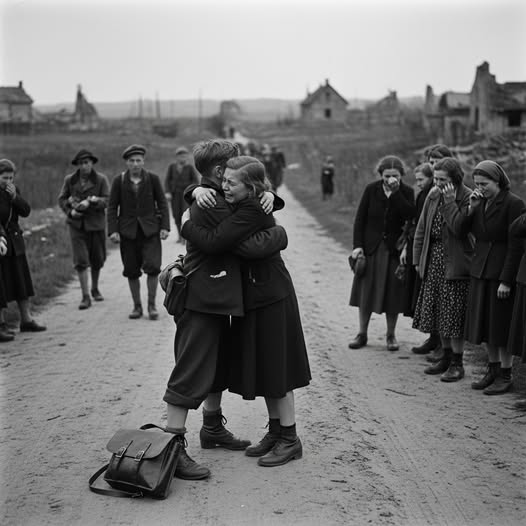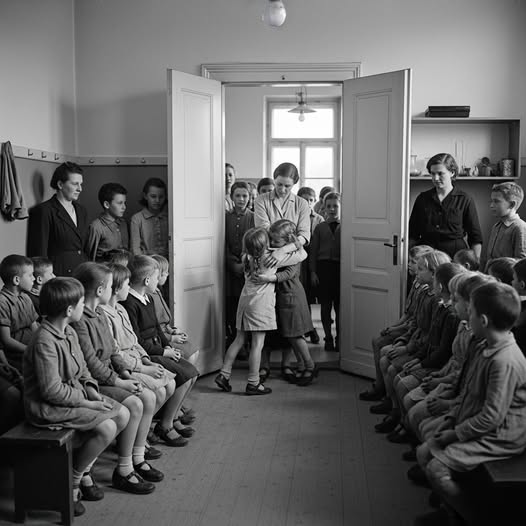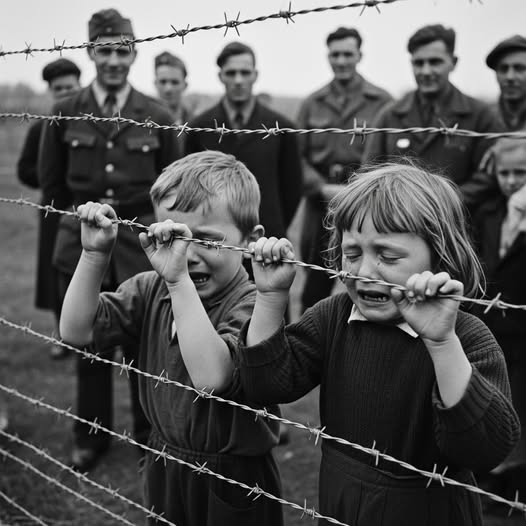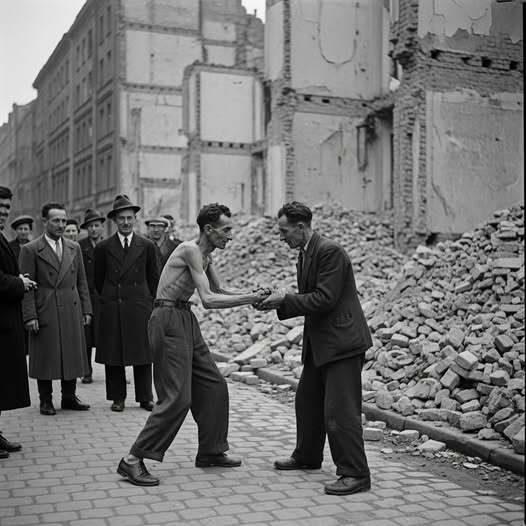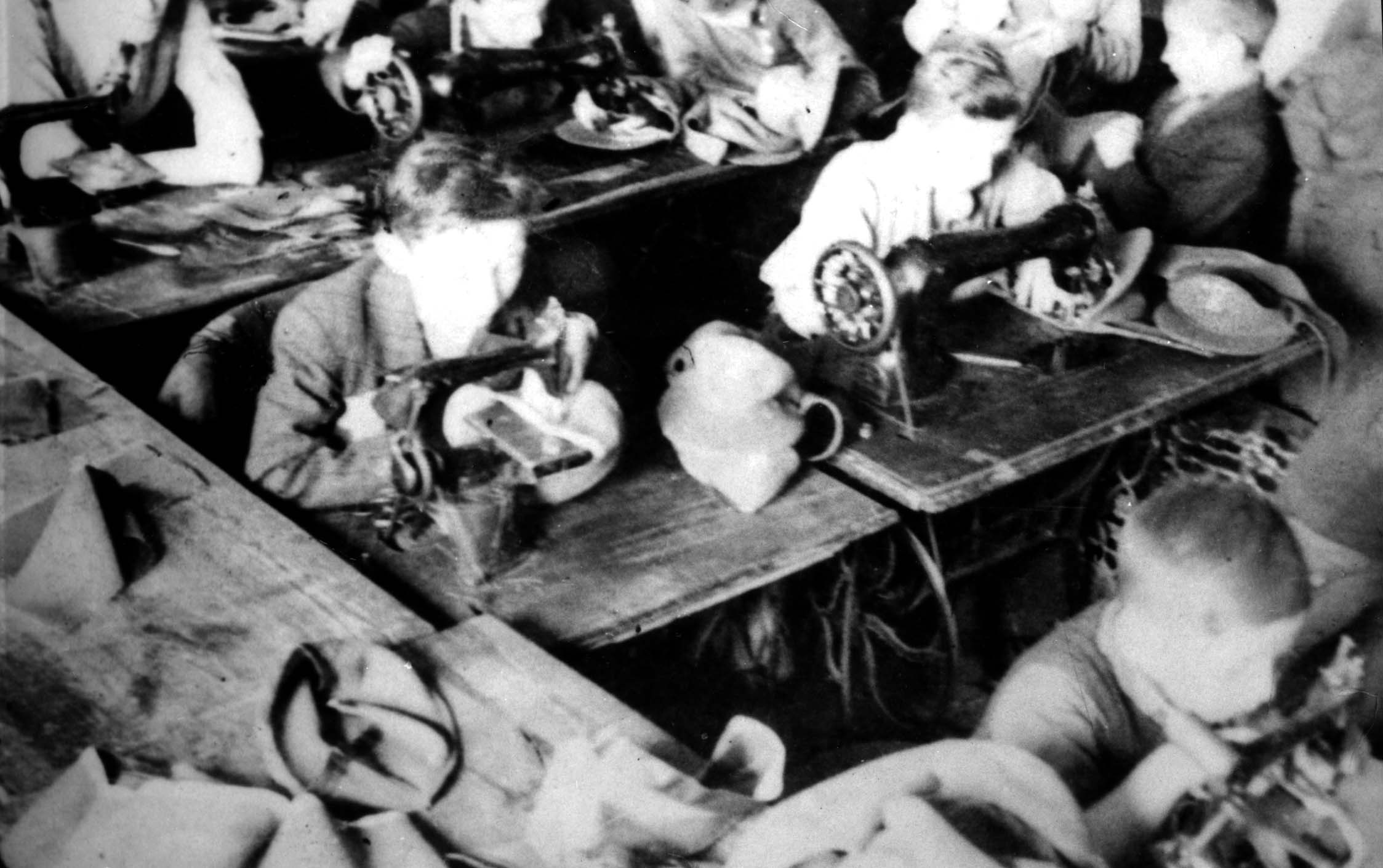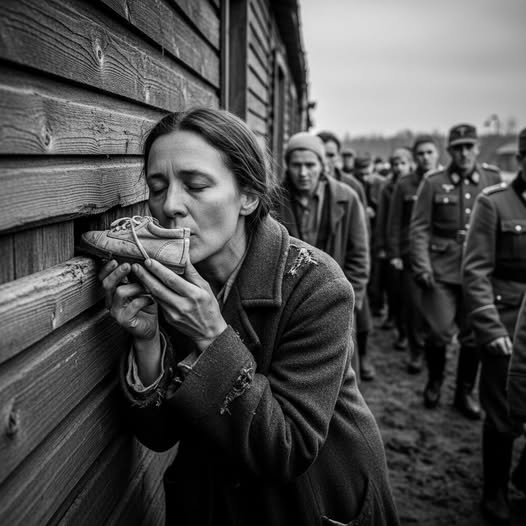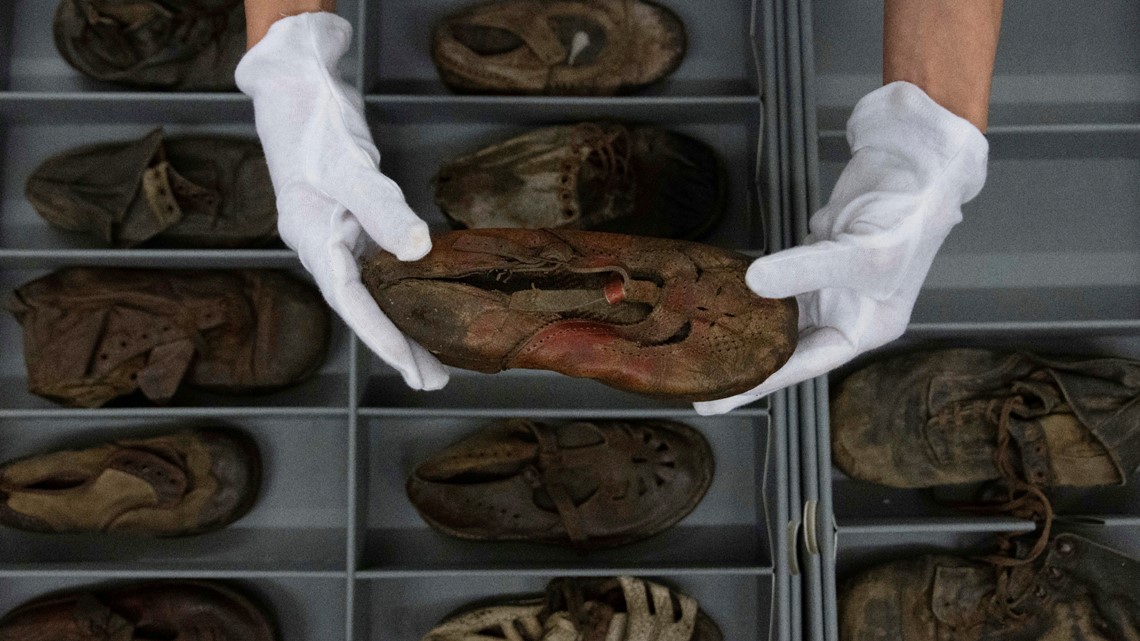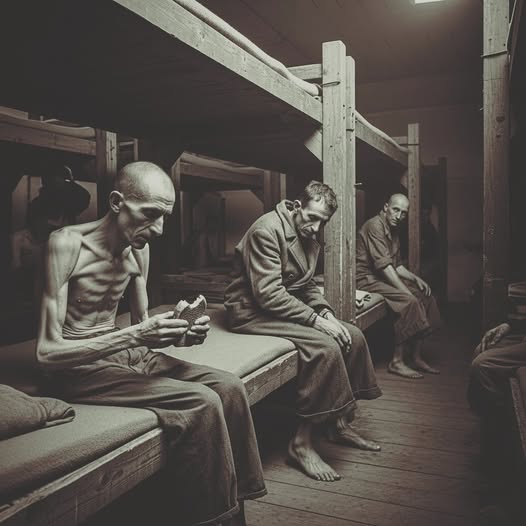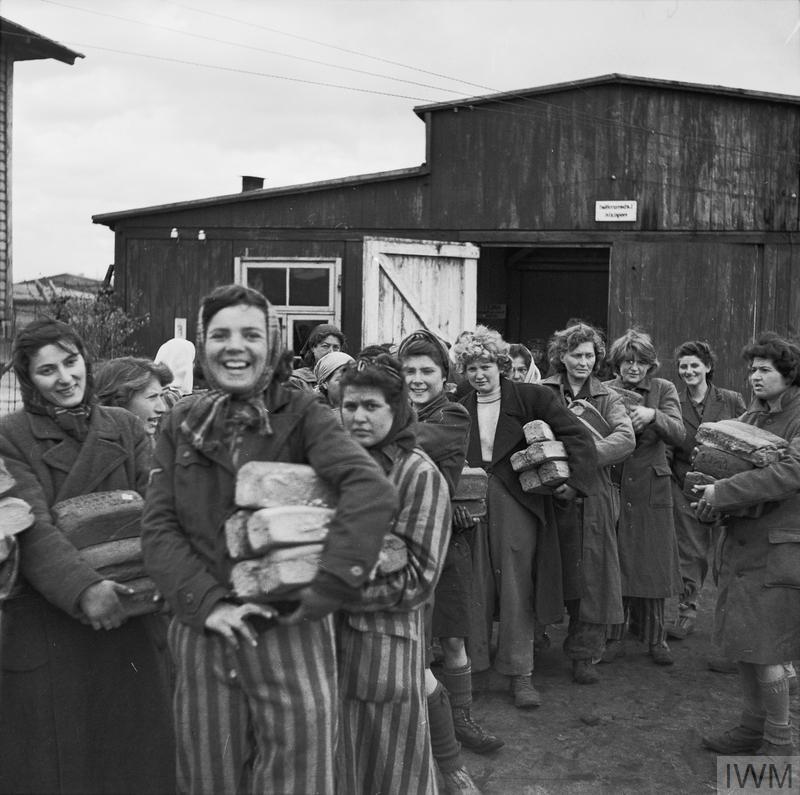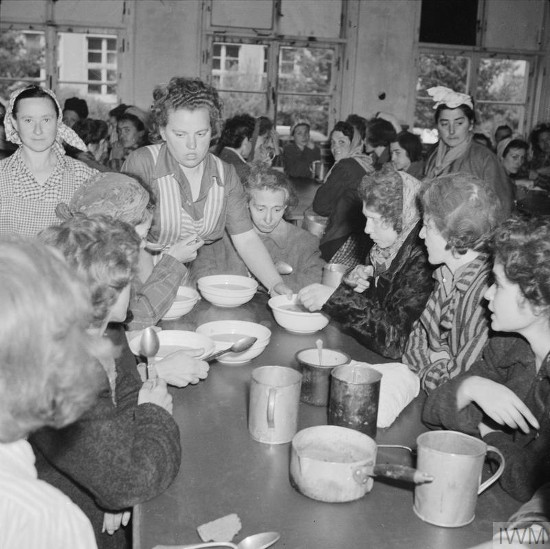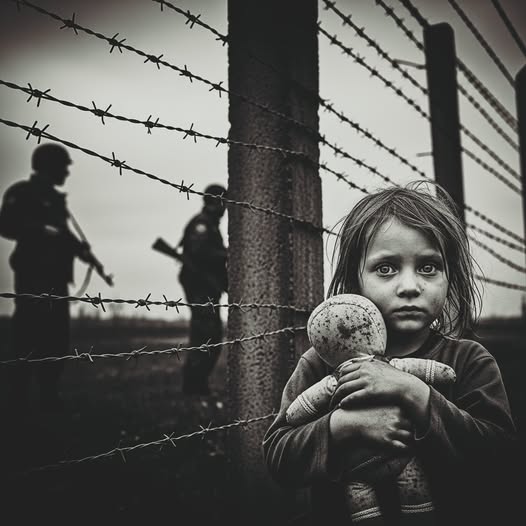The September 1945 reunion: a secret amid the ruins of war
In September 1945, the roads of Poland were nothing more than gaping scars, crisscrossed by silent columns. The survivors, reduced to shadows of their former selves, moved forward, step by step, as if each stone along the path still retained the echo of vanished cries. Among them, a fourteen-year-old boy, barefoot, carried a simple, tattered satchel, his last link to a past he no longer knew how to name. This detail—a worn satchel—seemed insignificant. Yet it contained more than an object: a key that only the future would reveal.
He was walking, his gaze fixed on the ground, when a voice broke the silence. A voice of flesh and memory, emerging from the side of the road, halfway between dream and reality. The boy stopped dead in his tracks. What if it was only an illusion born of hunger and fatigue? His comrades continued to move forward, but he remained frozen, imprisoned by this murmur. In his stillness, a strange promise: war, despite its ruins, could still bring back what was thought lost.
From the crowd of villagers, a young girl emerged, her face ravaged by disbelief. Her eyes betrayed a truth she still dared not accept: she knew this boy. She had thought him dead for years, swallowed by the flames of the camps. And yet, there, amidst the dust and ruins, he stood. She ran towards him, each step hammering doubt, each heartbeat demanding confirmation. Their eyes met, and in that split second, time itself seemed to stand still, as if history were holding its breath.
Then he dropped his satchel and rushed toward her. Their embrace was brutal, desperate, stronger than all the tears in the world. They clung to each other as if their thin bodies could defy death itself. Around them, passersby stopped, murmuring prayers, wiping reddened eyes. But in this public scene, there was an intimate enigma: what had they really lost, and what were they really finding? The answer remained buried, like a secret refusing to come to light.
This dirt road, marked by the footsteps of so many who had disappeared, suddenly became the scene of a fragile miracle. The ruins around them—gutted houses, collapsed roofs, silhouettes of charred walls—were testaments to the past. But what was playing out in the center of this road would belong to the future. The survivors knew that nothing would ever be the same again, and yet, in this embrace, there was the illusion of a possible return. A half-whispered promise: life could be reborn, even on ground saturated with ash.
And yet, behind the joy, a question persisted. How many families would never have this chance? How many children would continue to wander, without a voice calling them, without arms to welcome them? The witnesses present knew: this scene was rare, almost unnatural. It carried within it the bitterness of the absent and the mystery of an inexplicable survival. Some claimed that a miraculous chance had brought them together. Others whispered that a darker force, lurking in the ruins of Europe, was orchestrating this reunion as if to remind humanity that all was not yet said.
In the days that followed, the boy and his sister joined a camp for displaced persons. There, among the tents and makeshift shacks, they tried to rebuild their lives. But every night, in their dreams, the ghosts returned: the silhouette of a vanished mother, the voice of a father muffled within the walls of a camp. The embrace of the path remained their only defense against oblivion. Yet even in this refuge, a silence weighed on them: they did not tell everything. Between them stood an invisible border, made of memories too painful. Perhaps one day, one of them would speak. Perhaps never.
Historians who later examined the testimonies from this camp found mention of these two children. But some details diverged. Was the boy really fourteen, or did he only appear a shadow of it? Was the girl his sister, or a cousin, or even a stranger convinced she had recognized one face among many others? The official history simply notes: “Two children found each other.” But this administrative summary betrays the emotional truth of the moment. Behind the dryness of the archives, a secret remains: what if collective memory preferred to leave doubt hanging in the air to protect the fragile beauty of this moment?
September 1945 was not only a month of liberations and reckoning. It was also a month of unlikely reunions, of gazes that could no longer be separated, of silences heavy with mystery. Europe was healing its wounds, but each survivor carried a personal enigma, a fragment of truth that he hesitated to reveal. The road to Poland where these two children embraced remains, even today, a metaphor for this dual legacy: unspeakable pain and indestructible hope.
And perhaps this is the real secret: in the heart of the ruins, it was not only the family that found itself again, but humanity itself, flickering, fragile, but stubbornly refusing to disappear.
Note: Some content was generated using AI tools (ChatGPT) and edited by the author for creativity and suitability for historical illustration purposes.
